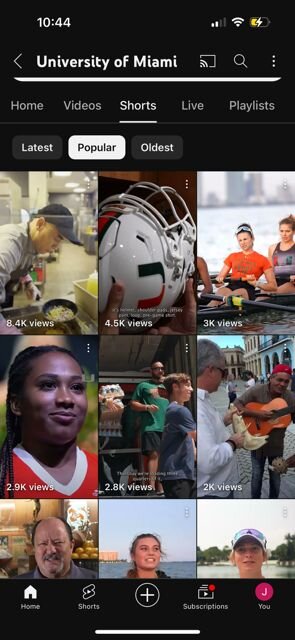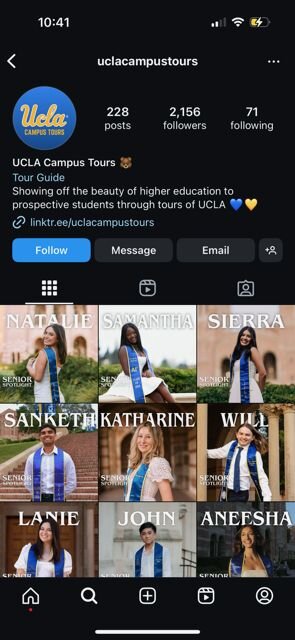Annually, Eduventures reviews the best communicators of the year according to students who participate in our Student Sentiment Research™. This year, we are highlighting a rising star that is not a specific institution, but rather a communication channel that has gained prominence in college search over the past years.
Social media is gaining traction, not only in student search behavior but also in student comments about specific institutions that impressed them. Clearly, some institutions have become highly effective social media communicators. What is working for them?
Shifting Tides
Every year, our Student Sentiment Research asks students to tell us whether they recall a school whose communications stood out and made them want to learn more. Additionally, we are curious to learn which schools impressed them, what it was that stood out, and through which channel the memorable communication was received.
In previous years, the top channels students mentioned are those that institutions have traditionally relied on the most in recruitment communications with prospects (email and print) and one of the core information sources for college-bound students (the institutional website). Historically, schools that focused their initial campaigns on this “recruitment trifecta” were able to reach most of their addressable markets.
But times are changing. Students have diversified their college search channels to include more digital sources, especially social platforms. This shift in channel preference has an impact on the type of outreach students notice and like. We can see this shift in Figure 1.

In just a short span of two years – from 2022 to 2024 – the proportion of students who said a school’s social presence stood out to them increased by 14%. And this significant increase has come at the cost of student impressions of print and email outreach (down 7% and 5%, respectively).
Impressions of institutional websites, on the other hand, have managed to hold steady in both years. Interestingly, the decrease appears to affect channels through which institutions actively reach out to students as opposed to more “passive” channels that students tend to find on their own (or through the active outreach).
But what is it that impressed students about a school’s social media posts? Below are three themes that emerged from the open-ended comments:
- Community and inclusivity. Several comments appreciate the sense of community and inclusiveness depicted in the posts. Students were impressed with the supportive and friendly environment that the schools seem to foster. Comments include: “They are active on their social media and make everything and everyone look like one big family there.”
- Authenticity and student voice. Positive feedback is given for the inclusion of real student testimonials and the authentic representation of student experiences, such as: “I enjoyed how interactive it was, and how they had students actively participate in showing what student and campus life was like, as well as events.”
- Information and transparency. There is also appreciation for clear and detailed information provided about the schools’ programs, costs, and overall experience. Many find the straightforwardness and transparency in communication helpful: “(I liked) the honesty and clarity about costs and information on study-abroad programs.”
In summary, students prefer social media posts that portray an inclusive and vibrant campus community in an authentic and interactive way. Student representation is appreciated and enhances the sense of authenticity. But it’s not all about the fun. Some students value institutions that proactively provide key information prospects seek – and often must search for – such as cost of attendance. The latter is important as more students use social platforms like YouTube as search engines.
Notable Mentions
Lastly, readers may be eager to learn which institutions managed to impress students with their social presence. Here are three institutions that were frequently mentioned by students. They were proportionally more often lauded for their social media presence than other institutions:
University of Miami
University of Miami was praised for displaying a lively and diverse campus atmosphere (see Screenshot 1 below). But it also stood out for its short how-to videos on a range of application topics from crafting an application essay to test-optional policies (see Screenshot 2 below). This support helped students navigate an often confusing and stressful process and may be especially beneficial to first-generation students.


University of California, Los Angeles
Comments about UCLA’s social media were as diverse as the university’s online presence itself. Present on seven different social platforms, UCLA also branches out by offering multiple channels for different audiences and topics (see Screenshots 3 and 4 below). The university’s social media accounts also make great use of current student profiles to show the campus diversity and help prospects build an emotional connection.


North Florida College
It’s rare to see a two-year college praised for its communication, but North Florida College breaks this pattern with several positive mentions about its social media presence this year. While the college is only present on three platforms – Facebook, Instagram, and YouTube – it shows consistency across these platforms and makes effective use of the student voice by showcasing the same students in its videos (see Screenshots 5 and 6 below). Clearly, North Florida College recognizes the importance of using student ambassadors in its content creation.


The Bottom Line
While it is not surprising to see large research institutions with big marketing budgets commended for their social media presence, North Florida College shows that every institution can make an impact on social platforms. Institutions need to remember the three features they should provide in their social media recruitment:
- Sense of belonging - through displaying a warm and inclusive campus community and inviting prospects to be part of it.
- Authenticity - through the unfiltered student voice and/or use of student ambassadors and influencers.
- Bite-sized, relevant information - through short, informative videos and transparent quick facts on key metrics students look for and easy searchability through the use of hashtags and keywords.

Extend Your Marketing Team and Reach Your Goals
Your team has big goals—like increasing applications and preventing melt. Encoura's Digital Marketing Solutions team is ready to partner with you to reach students, their families, and alumni with timely messaging that matters most.

